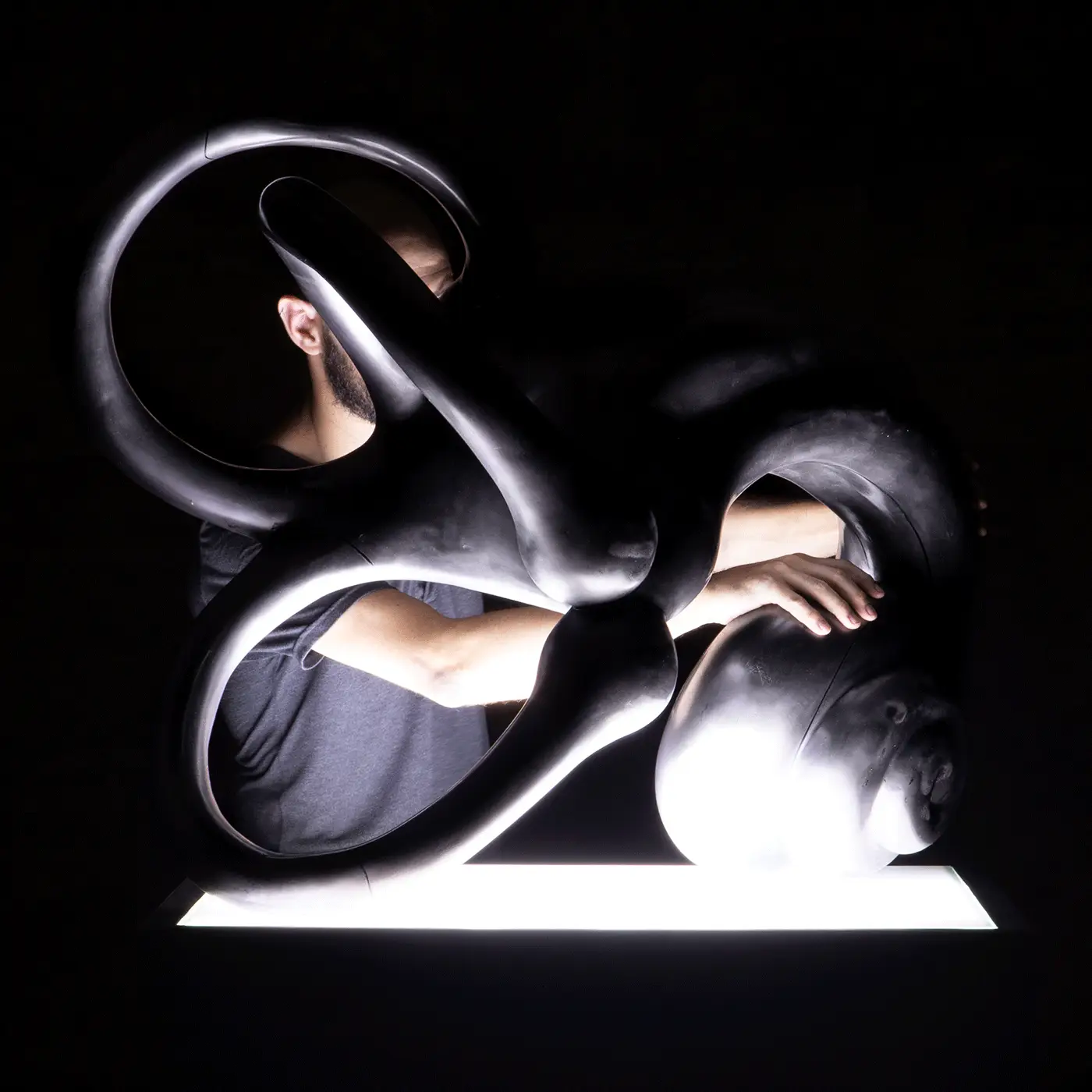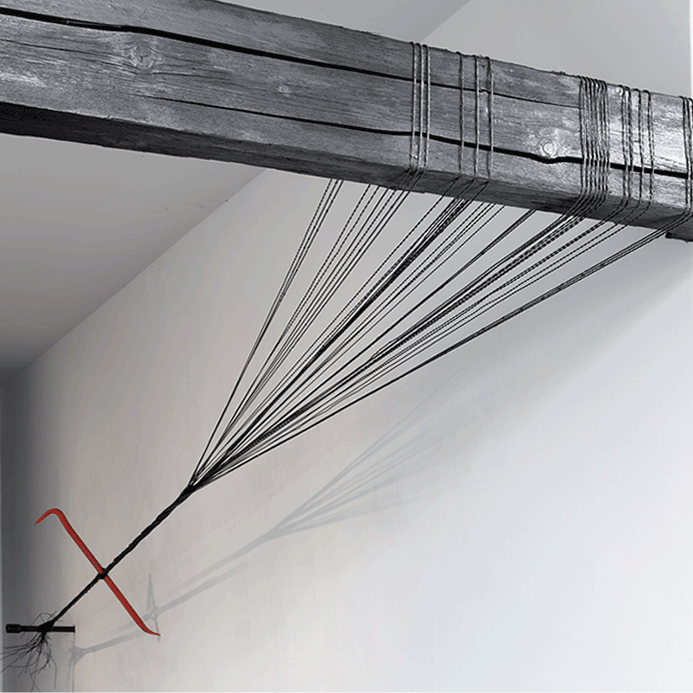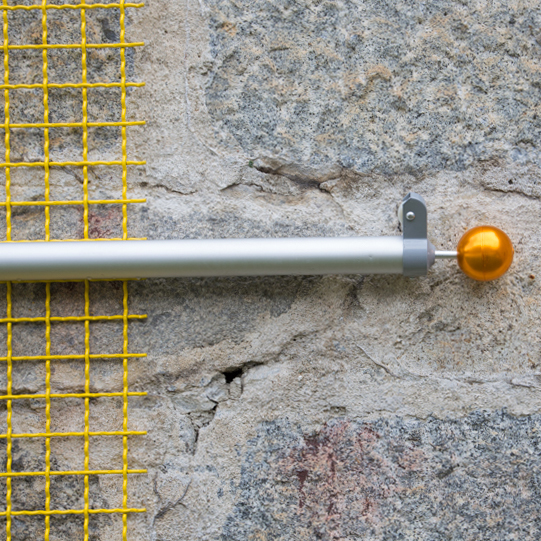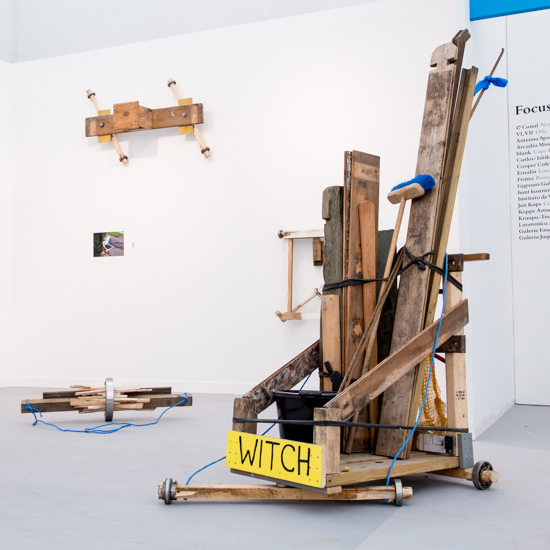What he writes with one hand is erased with the other
A text about Friday 13 of 2015 and ‘Borders are for Crossing’
StudioRCA
Friday 13 November, not a good date for the superstitious. A crit and discussion on the exhibition ‘Borders are for Crossing: an exercise in the art of conversation’, lead by the PhD students, took place at StudioRCA, a temporary exhibition space of the Royal College of Art sponsored for the next 4 years by StJames [1] property developers. Located on the ground floor of a building of apartments for property investors and people who can afford 1 million pound flats (starting at £580,000 to £2,000,000[2]). The area is under going ‘regeneration’, and what used to be a an industrial area is now going to be, or is becoming, an important focus of development: with the U.S embassy moving its location to that area. Currently, the building is partially empty, which could be because nobody has moved in yet; the project would seem to be either, a complete failure or the people who have bought the flats do not have plans to move there. The designers appear to have followed a manual: the space is clean, organised and there are no elements that can give you a sense of location. This could be Miami, Dubai or São Paulo. It is the perfect scenario for a science fiction movie, like HER directed by Spike Jonze, where there is no poverty, graffitis or marginals. StudioRCA shares the first floor with a SPA, in the Studio there is a glass window. Despite the pattern of the glass, it is possible to glimpse the pool of the SPA on the underground floor of the building. In that particular day, access to the Studio was through the nicely perfumed reception of the SPA; its main door and windows were blocked with styrofoam to ‘protect/isolate’ from the ongoing repairs.
The exercise was subordinated under the following proposition:
‘Students from Edinburgh College of Art will be working in our studios and workshops next week culminating in an open discussion […] They have brought down previously prepared works with a small footprint with which they wish to begin a visual/spatial dialogue in studioRCA […] They invite you to respond with your work or other objects by placing and moving things around to create conversations between the works […]’[3]
The exercise stressed conversation and dialogue as the main strategies of work. The result: a well coordinated exhibition and crit on the cold morning of Friday 13th.
The exhibition, just like in the strategy of a surrealist exquisite corpse, rather than making visible individualities, evidenced the instructions, strategies and tactics (ways of doing) of approaching and reacting to a situation of dialogue and conversation. In an attempt to approach what is in the space I did an inventory of ways of doing:
1. Placing
In a basic relation with the physical and discursive conditions of the space, works are placed in the site. In a temporal sequence this way of doing is the primary.
The door
2. Relation
As a logical succession in time, other works or attitudes, were used as a starting point. The works installed in the previous stage of “Placing”, established an unedited relation with them, either by correspondence or by oppositions.
The objects next to the window
3. Parasite.
The way of doing of ‘parasiting’ (the prefix ‘para’, implies being parallel to, beside; adjacent to) uses other works as the main place of being. As a consequence, they become co-dependent to the specific qualities of the host. Nevertheless, as an iteration, that repeats in different places, this way of doing, leaves its condition of ‘para’ to become a site. A work that is present simultaneously in different places of the space.
The group outside the space.
Continuing with the inventories, the effects of these ways of doing can be classified in the following set. The effects are not exclusive. Two or more effects can operate in specific clusters:
A.Collage
Clusters that are composed by dissimilar elements, which despite being recognised as fragments with their own possibility of existence as autonomous works, configure a composition that creates a unity built by fragments. [i.e. Kurt Schwitters[4] collage, made out of recognisable fragments; found and everyday objects such as train tickets, newspapers, advertisement and fabrics that put together in the same surface, constitute a unit; the collage]
The set located between the floor and the ceiling.
B.Fusion
Works that in their encounter dissolve into a single unit that it cannot be disassociated. [i.e. green pigment made by the mixing of yellow and blue pigment]
The organic structure
C.Hieroglyphs
Works that are possible in the interaction, contraposition, complementation between two isolated works, establish conditions for the being of a third work that is not present in either both works [i.e. the principle of montage: Odessa’s steps sequence in the film Battleship Potemkin (1925) directed by Sergei Eisenstein]
The photograph
D. Repellent
Works that resist contamination or complementation and stand as individual units. [i.e. oil and water]
The metal structure
The critique lead by the PhD students had the first said on the authorship of the works. With a clear confidence in establishing limits of what is a work, the question, Who is responsible of this work? was the main compass of the discussion. ‘Lo que escribe con una mano lo borra con la otra’. An exercise on crossing borders, overlapped by the well known script of individualities that, in this case, ignores the delusion of the limits of individual works and the potentiality of evidencing ways of doing and sensibilities that make them possible, build an amalgam of unforeseen possibilities of artistic practice artistic practice at StudioRCA (individuals and two institutions: RCA and Edinburgh).
In spite of the fact that one of the coordinators from Edinburgh expressed the possibility of working under the space of fiction —he mentioned the strategy of giving a fictional title to works and then discussing them and confronting the fictional titles with the original ones. This wasn’t taken into the account. I include myself. Fiction has the ability to create a situation that escapes the limits of the possible and in that operation it incites to rethink, question, face, undermine and appreciate other modes of possibility. I imagine and further propose: An exquisite corpse, a curatorial text, written by all the participants of the exercise; a press release of the exhibition done by StJames’ developers who are sponsoring StudioRCA; a guided visit to the exhibition while simultaneously the works and objects are being constantly relocated and a catalog done only with images from the internet.
Despite the superstitious potentialities of the Friday 13, the evening ended with free drinks and dancing.*
Santiago Reyes Villaveces
MA in Sculpture
Royal College of Art
*Later, the bitter flavour of the events in Paris changed the mood of the night. It wasn’t because was 13, it was because on Fridays people are out in the streets and the effects are higher. A well know strategy to those ones who want to create terror. Despite the sound of pain and mourning are equally produce, our sensibility make us hear clear and loudly some specific cries(Paris Friday 13th), producing valid and necessary responses. At the same time we experience a dangerous growth of nationalism—‘Borders should be respected’. Even though, the cries are not less loud than those coming from: Syria, Kenya, Colombia, Palestine, Mexico, Afghanistan,Turkey, Lebanon and the endless list. This difference in sensibility begs for a further question, which may very well be aesthetic: To what are we sensible? How is this distribution of the sensible is performed? and What means producing and reproducing a distribution of the sensible? These strike me as a relevant footnote, to approach these type of mass mediatised violent events.
Notes
[1] ‘St James is a proud member of The Berkeley Group, a UK leader in the visionary delivery of major urban regeneration schemes. The Group has been responsible for shaping much of the modern development along central London’s riverside, replacing former industrial areas with vibrant places to live, work and play.’ About St James | Berkeley Group [WWW Document], n.d. URL http://www.berkeleygroup.co.uk/property-developers/st-james/about-st-james (accessed 11.17.15).
[2] Apartment for sale in Riverlight Quay, Nine Elms, London, SW8 | MyLondonHome [WWW Document], n.d. URL https://www.mylondonhome.com/property-for-sale/apartment-for-sale/riverlight-quay-nine-elms-london-sw8/901?gclid=CNzShubkl8kCFUHGGwoddpILPQ (accessed 11.17.15).
[3]Taken from the e-mail sent by the sculpture department of the Royal College of Art
[4]Kurt Schwitters Hanover, Germany (20 June 1887 – 8 January 1948).



